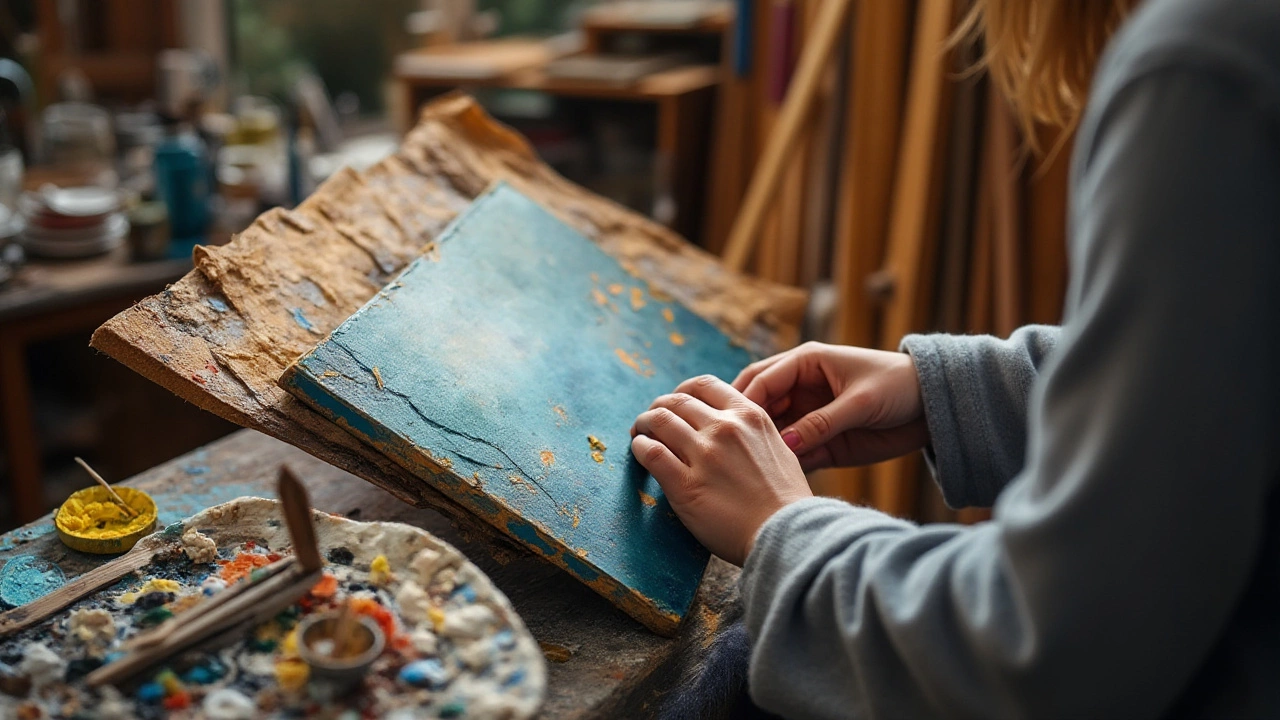Stripping Paint – What It Is and Why It Matters
When working with stripping paint, the process of removing old paint layers from a surface to reveal or ready the material underneath. Also known as paint removal, it plays a key role in everything from home renovation to fine‑art conservation. Understanding the basics helps you pick the right chemicals, tools, and safety steps before you start.
Key Related Concepts
One major companion to stripping paint is surface preparation, the set of tasks that make a substrate ready for a new finish, including cleaning, sanding, and priming. Without proper prep, new paint can peel or chip quickly. Another linked field is art restoration, the careful cleaning and repair of paintings, sculptures, and other works, often requiring gentle paint stripping to reveal original layers. Restorers use milder agents to protect the artwork while removing aged varnish or over‑paints. Finally, consider the role of protective coating, a clear or tinted layer applied after paint removal to shield the surface from moisture, UV, and wear. A good coating prolongs the life of the newly finished piece.
These entities form a clear chain: stripping paint encompasses paint removal, which requires careful surface preparation, and often influences decisions in art restoration. In turn, the choice of protective coating affects how long the refreshed surface will stay pristine. Knowing how each piece fits together lets you plan a smoother workflow and avoid costly mistakes.
Practically speaking, the most common methods include chemical strippers, heat guns, and abrasive sanding. Chemical strippers break down binder molecules, making paint lift off with a scraper. Heat guns soften layers so they can be peeled away, but they demand caution around flammable materials. Abrasive sanding mechanically removes paint but can damage delicate wood or canvas if over‑used. Selecting a method depends on the substrate—metal, wood, plaster, or canvas each reacts differently.
Safety is non‑negotiable. Many paint removers contain volatile organic compounds (VOCs) that can irritate lungs and skin. Always work in a well‑ventilated area, wear gloves, goggles, and a respirator when needed. If you’re stripping paint from a historic artwork, talk to a conservator first; they might recommend a low‑pH gel stripper that won’t harm pigments.
Beyond the how‑to, the why is worth noting. Removing old paint reveals hidden details, improves adhesion for fresh coats, and can uncover original colors in heritage buildings or artworks. In our collection of articles below, you’ll find guides on digital art monetization, landscape painting tricks, and even modern art theory—all of which benefit from a clean visual foundation, whether that’s a fresh canvas or a newly stripped wall.
Ready to explore deeper insights? Below’s a curated set of posts that expand on techniques, tools, and creative applications related to paint stripping and the broader art world. Dive in for step‑by‑step advice, expert tips, and fresh perspectives that will help you master surface prep and bring your projects to life.

Repainting an old canvas can be a challenge if you are unsure whether to strip the old paint first. Understanding the benefits and drawbacks of removing aged paint is crucial for achieving the best results. This article delves into various oil painting techniques, while also offering practical guidance for preserving the original texture and quality of your artwork. Discover key considerations for effective repainting, ensuring your new layer stands out beautifully.





